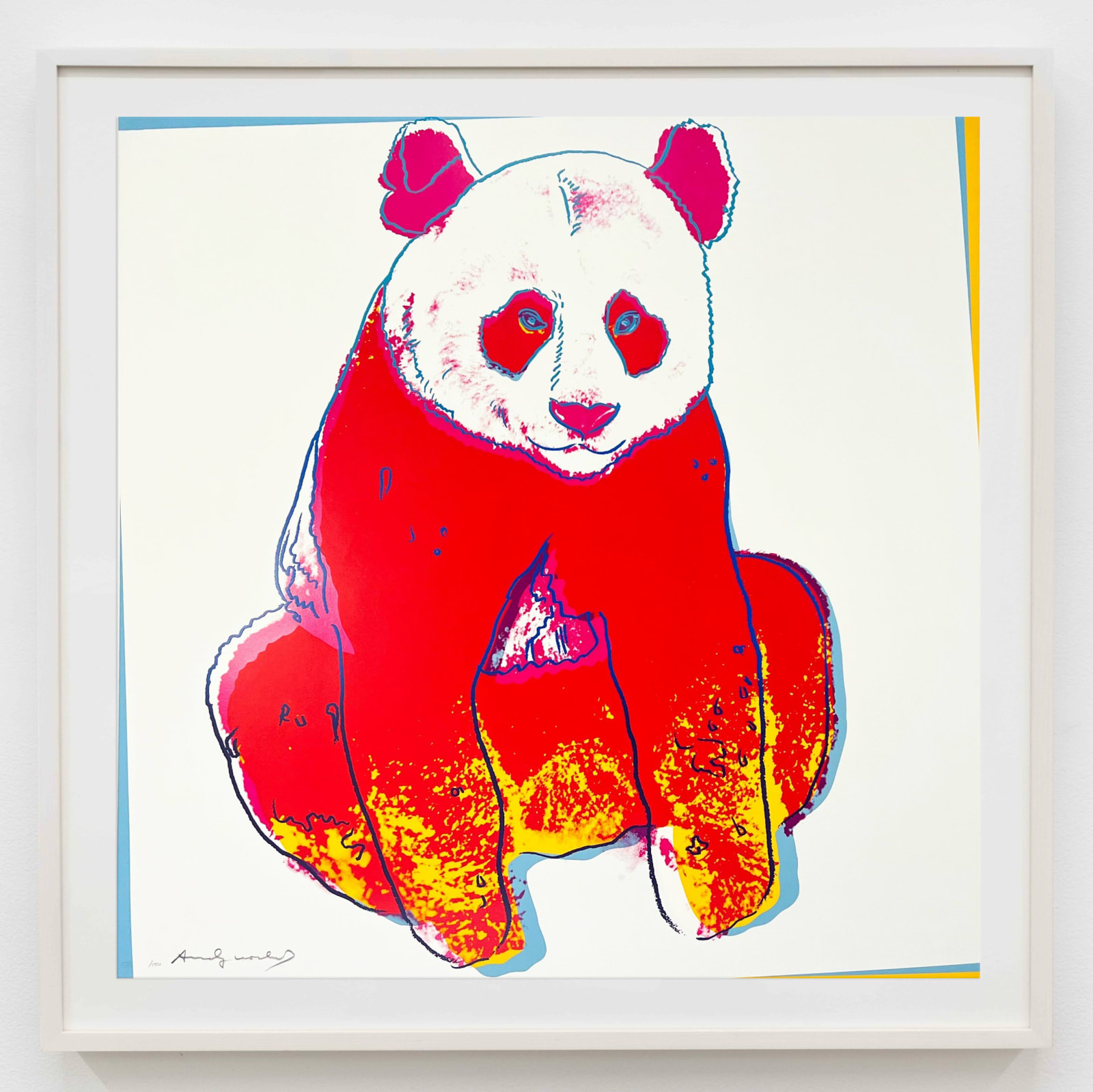Andy Warhol American, 1928-1987
96.5 x 96.5 cm.
Provenance
Ronald Feldman, NYCPrivate Collection, Canada
The Endangered Species series by Andy Warhol, created in 1983, is a striking exploration of the intersection between art, nature, and conservation. In this series, Warhol uses his signature pop art style to depict twelve animals that were considered endangered at the time, transforming them into bold, colorful images that both celebrate and highlight the fragility of these species. The series includes creatures like the African Elephant, the Bald Eagle, and the Giant Panda, among others.
Warhol’s portrayal of the Giant Panda, one of the most iconic and beloved endangered species, stands out for its juxtaposition of vibrant color and stark black-and-white contrasts. The panda is rendered in Warhol’s characteristic style, with bright, almost unnatural hues, creating a sense of both playfulness and urgency. By choosing such a highly recognizable and endangered animal, Warhol’s work serves as a poignant reminder of the impact of human activity on the natural world, while also elevating the panda to the status of a pop icon. The use of mass production techniques, repetition, and vivid color treatments in the series questions the commodification of nature, while also underscoring the dire need for conservation efforts to preserve such species.
Join our mailing list
* denotes required fields
We will process the personal data you have supplied in accordance with our privacy policy (available on request). You can unsubscribe or change your preferences at any time by clicking the link in our emails.



